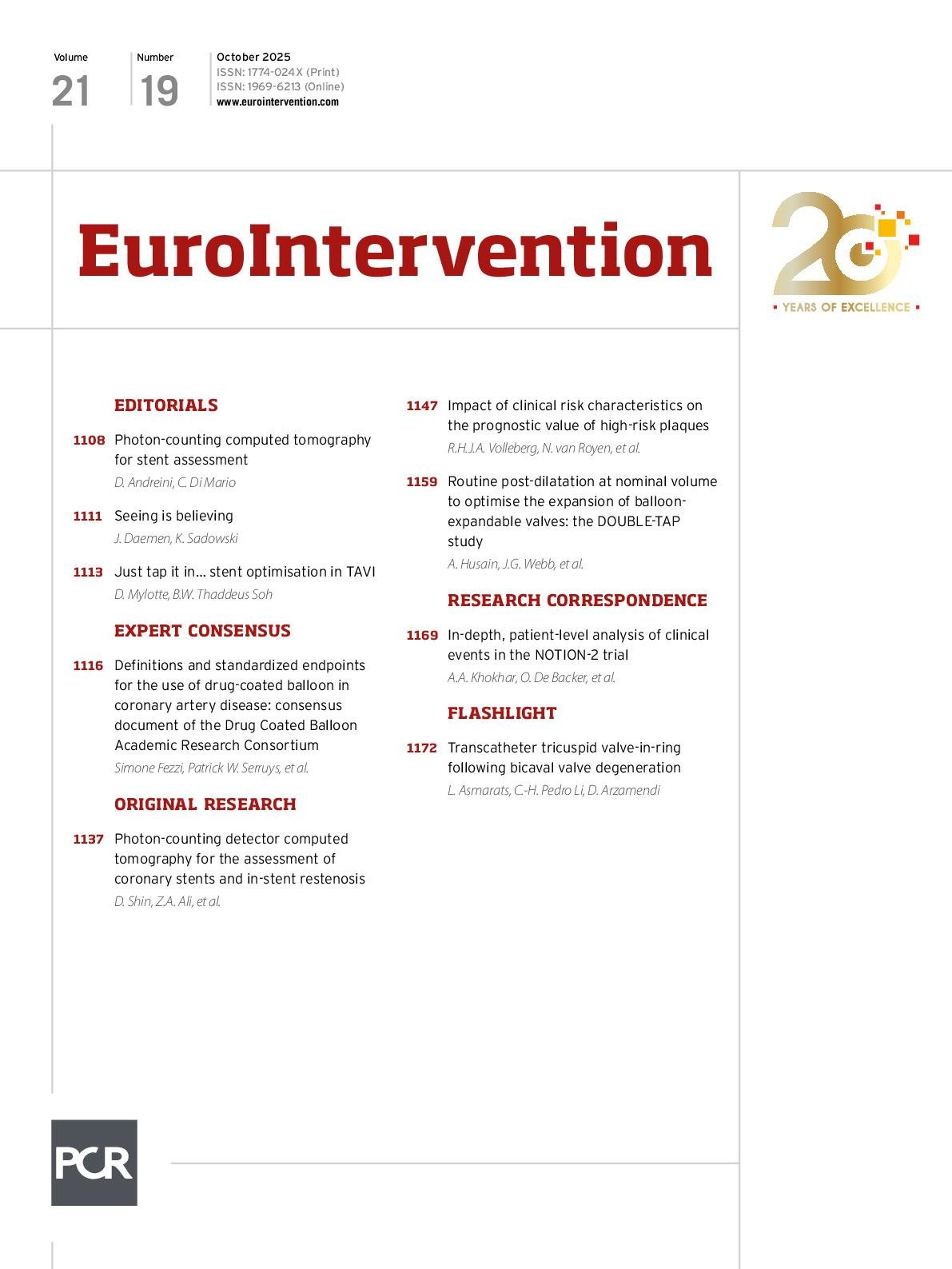Risk scores are essential tools in cardiovascular medicine for stratifying patients’ risk of recurrent events and guiding secondary prevention strategies. One of the well-validated scores in large cohorts of patients after myocardial infarction (MI) is the Thrombolysis in Myocardial Infarction Risk Score for Secondary Prevention (TRS-2P)1. Intravascular imaging has become a cornerstone in assessing coronary plaque morphology. Among the available modalities, optical coherence tomography (OCT) enables the precise visualisation of features associated with plaque vulnerability, such as thin-cap fibroatheroma (TCFA), a large lipid core, or plaque rupture2. Previous studies demonstrated that OCT identified the presence of high-risk plaque (HRP) in up to 48% of non-culprit arteries in patients presenting with acute coronary syndrome (ACS)345. Conversely, physiological lesion assessment using either conventional or angiography-based physiology appeared to only have a limited negative predictive value as HRP was determined in up to 31% of fractional flow reserve (FFR)-negative non-culprit lesions46. Despite the clear benefits of OCT, its use in routine clinical practice remains limited, primarily due to factors such as challenges in reimbursement and lack...
Sign up for free!
Join us for free and access thousands of articles from EuroIntervention, as well as presentations, videos, cases from PCRonline.com

